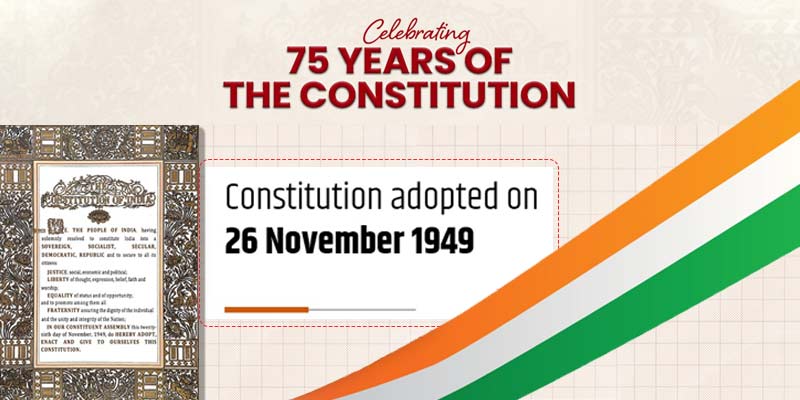- India
- Nov 26
- Kevin Savio Antony
India celebrates 75 years of adoption of the Constitution
• Constitution Day is celebrated in our country on November 26 every year to commemorate the adoption of the Constitution of India.
• On November 26, 1949, the Constituent Assembly of India adopted the Constitution of India, which came into effect from January 26, 1950.
• In 2015, the Ministry of Social Justice and Empowerment notified the decision of the government of India to celebrate November 26 every year as ‘Constitution Day’ to promote Constitution values among citizens.
Framing of the Constitution:
• Early Proposal: The idea of a Constituent Assembly was first proposed by M.N. Roy in 1934.
• Formation of the Constituent Assembly: Elections for the formation of the Constituent Assembly were held under the Cabinet Mission Plan in 1946.
• The Constituent Assembly met for the first time in New Delhi on December 9, 1946 in the Central Hall of the old Parliament House building.
• The Constituent Assembly took almost three years (two years, eleven months and 17 days to be precise) to complete its historic task of drafting the Constitution for Independent India. During this period, it held 11 sessions covering a total of 165 days. Of these, 114 days were spent on the consideration of the Draft Constitution.
• Committees Involved in Framing the Constitution: The Constituent Assembly of India appointed 13 committees to handle different tasks related to framing the Constitution. Out of these, 8 were major committees:
i) Drafting Committee: Chaired by Dr. B. R. Ambedkar.
ii) Union Power Committee: Chaired by Jawaharlal Nehru.
iii) Union Constitution Committee: Chaired by Jawaharlal Nehru.
iv) Provincial Constitution Committee: Chaired by Vallabhbhai Patel.
v) Advisory Committee on Fundamental Rights, Minorities, and Tribal and Excluded Areas: Chaired by Vallabhbhai Patel.
vi) Rules of Procedure Committee: Chaired by Rajendra Prasad.
vii) States Committee (Committee for Negotiating with States): Chaired by Jawaharlal Nehru.
viii) Steering Committee: Chaired by Rajendra Prasad.
• While the Constitution was adopted on November 26, 1949, it came into effect on January 26, 1950 when India became a republic.
Key facts about Constitution of India:
• Length: It is the world’s longest written Constitution.
• Government Structure: The Constitution establishes a Federal System with Unitary Features and follows a Parliamentary Form of Government.
• Original Copies: The original copies of the Constitution were handwritten, not typed or printed. They are now preserved in helium-filled cases in the library of the Parliament.
• Handwritten by Prem Bihari Narain Raizada: The unique copies of the Constitution were written by Prem Bihari Narain Raizada.
• Languages: Initially, the Constitution was written in English and Hindi. The basic structure of the Indian Constitution draws heavily from the Government of India Act, 1935.
(The author is a trainer for Civil Services aspirants.)



